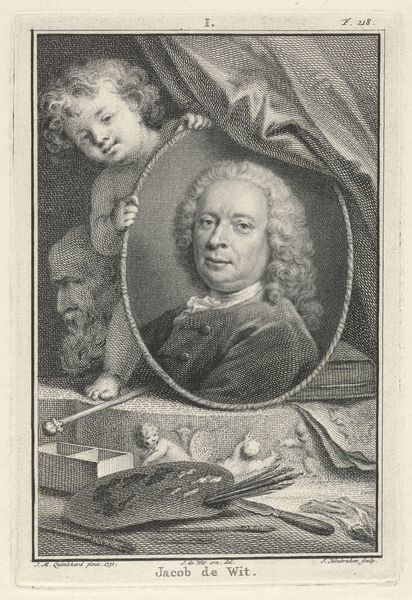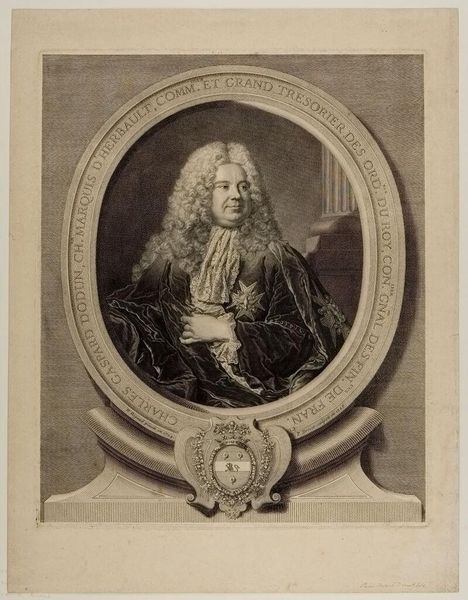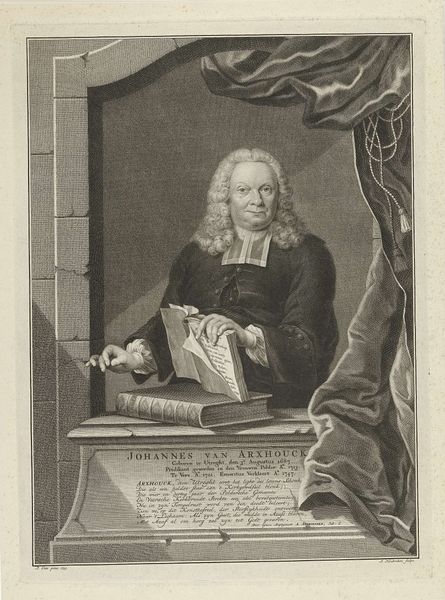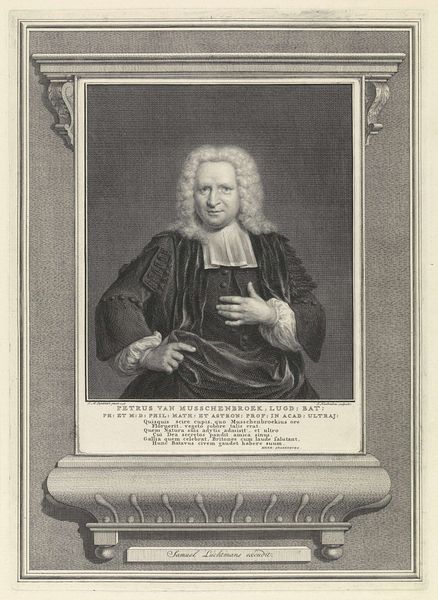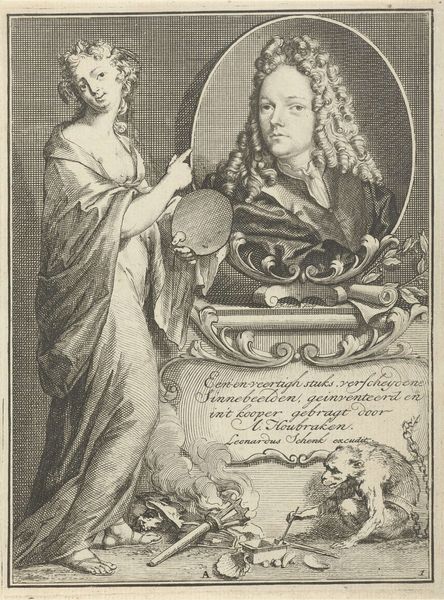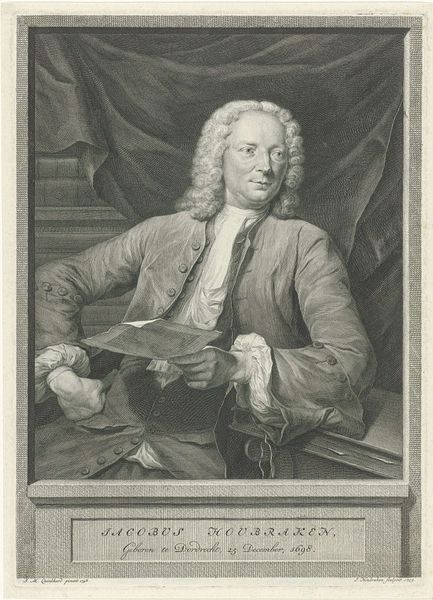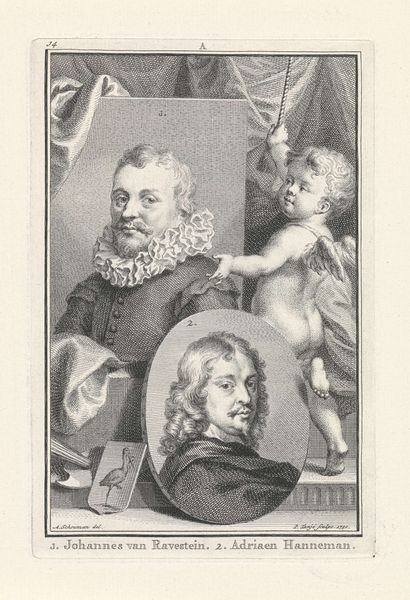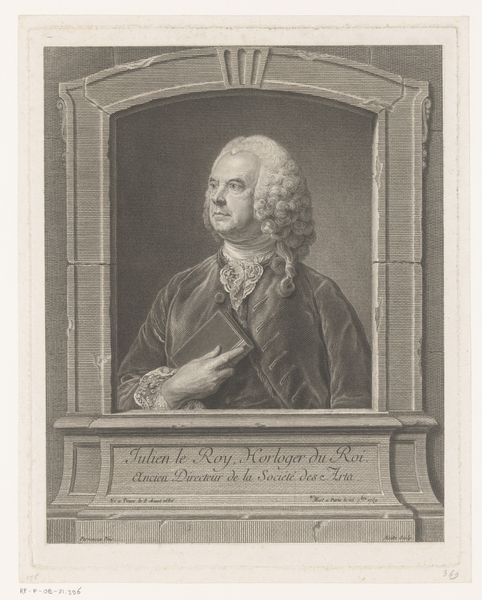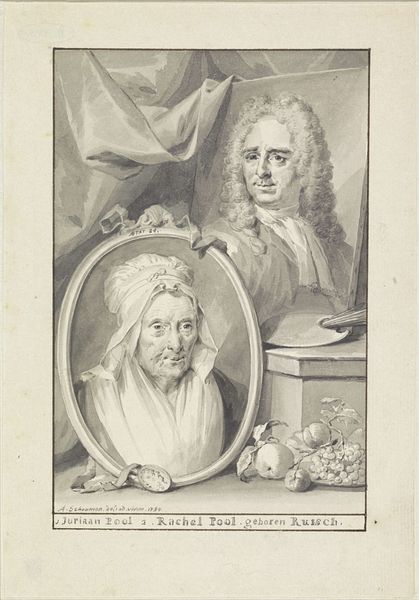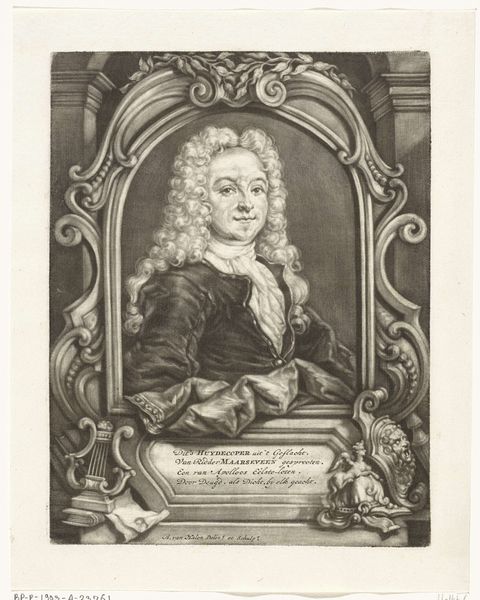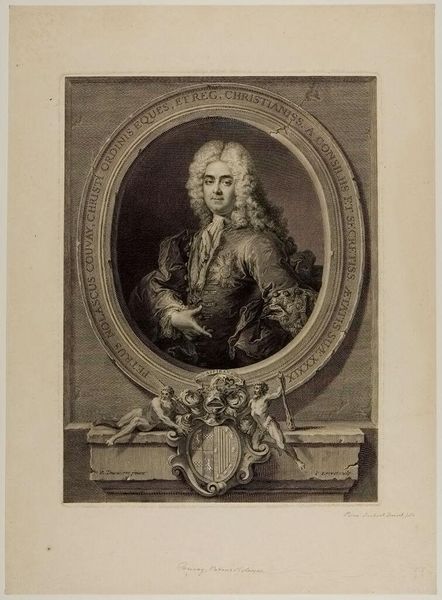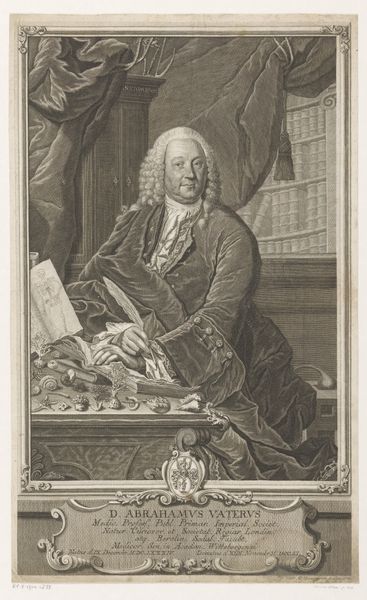
#
portrait
#
pencil drawn
#
light pencil work
#
wedding photograph
#
photo restoration
#
archive photography
#
historical photography
#
portrait reference
#
old-timey
#
yellow element
#
19th century
Dimensions: height 386 mm, width 280 mm
Copyright: Rijks Museum: Open Domain
This is Pieter Tanjé's print of Jan Maurits Quinkhard, made in the Netherlands in the mid-18th century. Prints like these were crucial for artists to circulate their work and build a reputation in the art world. Here, we see the painter Quinkhard represented twice, once as an active artist holding his palette and brushes, and again in the background as a completed portrait on an easel. The image functions as a kind of advertisement, showcasing Quinkhard's skill and attracting potential clients. Artists in this period were increasingly reliant on patronage and the open market, so prints played a key role in that process. Understanding the social and economic context of art production is essential to our appreciation of works like this. Examining archival sources, such as letters, account books, and exhibition catalogues, can reveal the complex networks of artists, patrons, and institutions that shaped the art world of the 18th century. Ultimately, this helps us understand the public role of art.
Comments
No comments
Be the first to comment and join the conversation on the ultimate creative platform.
